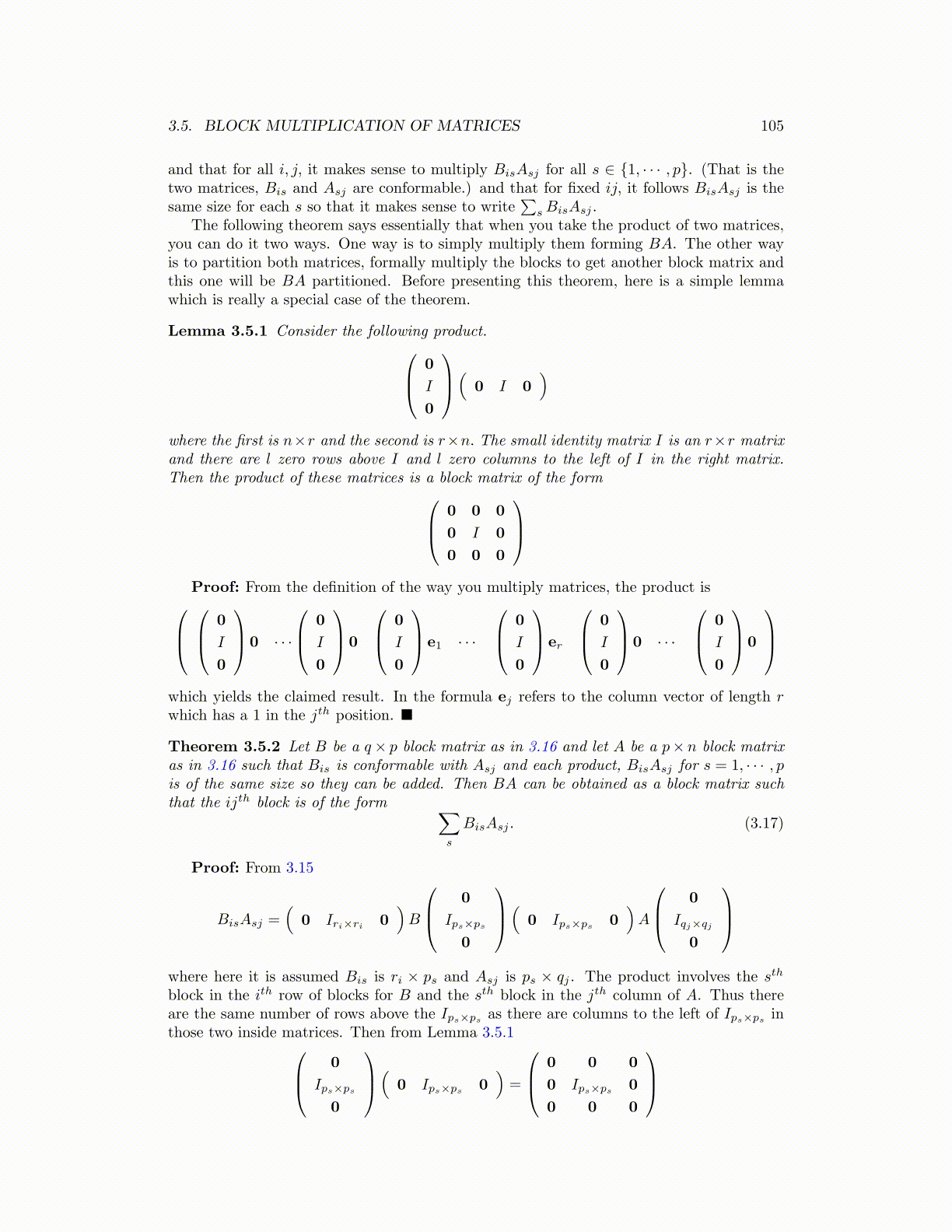
3.5. BLOCK MULTIPLICATION OF MATRICES 105
and that for all i, j, it makes sense to multiply BisAsj for all s ∈ {1, · · · , p}. (That is thetwo matrices, Bis and Asj are conformable.) and that for fixed ij, it follows BisAsj is thesame size for each s so that it makes sense to write
∑sBisAsj .
The following theorem says essentially that when you take the product of two matrices,you can do it two ways. One way is to simply multiply them forming BA. The other wayis to partition both matrices, formally multiply the blocks to get another block matrix andthis one will be BA partitioned. Before presenting this theorem, here is a simple lemmawhich is really a special case of the theorem.
Lemma 3.5.1 Consider the following product. 0
I
0
( 0 I 0)
where the first is n×r and the second is r×n. The small identity matrix I is an r×r matrixand there are l zero rows above I and l zero columns to the left of I in the right matrix.Then the product of these matrices is a block matrix of the form 0 0 0
0 I 0
0 0 0
Proof: From the definition of the way you multiply matrices, the product is 0
I
0
0 · · ·
0
I
0
0
0
I
0
e1 · · ·
0
I
0
er
0
I
0
0 · · ·
0
I
0
0
which yields the claimed result. In the formula ej refers to the column vector of length rwhich has a 1 in the jth position. ■
Theorem 3.5.2 Let B be a q× p block matrix as in 3.16 and let A be a p× n block matrixas in 3.16 such that Bis is conformable with Asj and each product, BisAsj for s = 1, · · · , pis of the same size so they can be added. Then BA can be obtained as a block matrix suchthat the ijth block is of the form ∑
s
BisAsj . (3.17)
Proof: From 3.15
BisAsj =(
0 Iri×ri 0)B
0
Ips×ps
0
( 0 Ips×ps 0)A
0
Iqj×qj
0
where here it is assumed Bis is ri × ps and Asj is ps × qj . The product involves the sth
block in the ith row of blocks for B and the sth block in the jth column of A. Thus thereare the same number of rows above the Ips×ps
as there are columns to the left of Ips×psin
those two inside matrices. Then from Lemma 3.5.1 0
Ips×ps
0
( 0 Ips×ps0)=
0 0 0
0 Ips×ps0
0 0 0